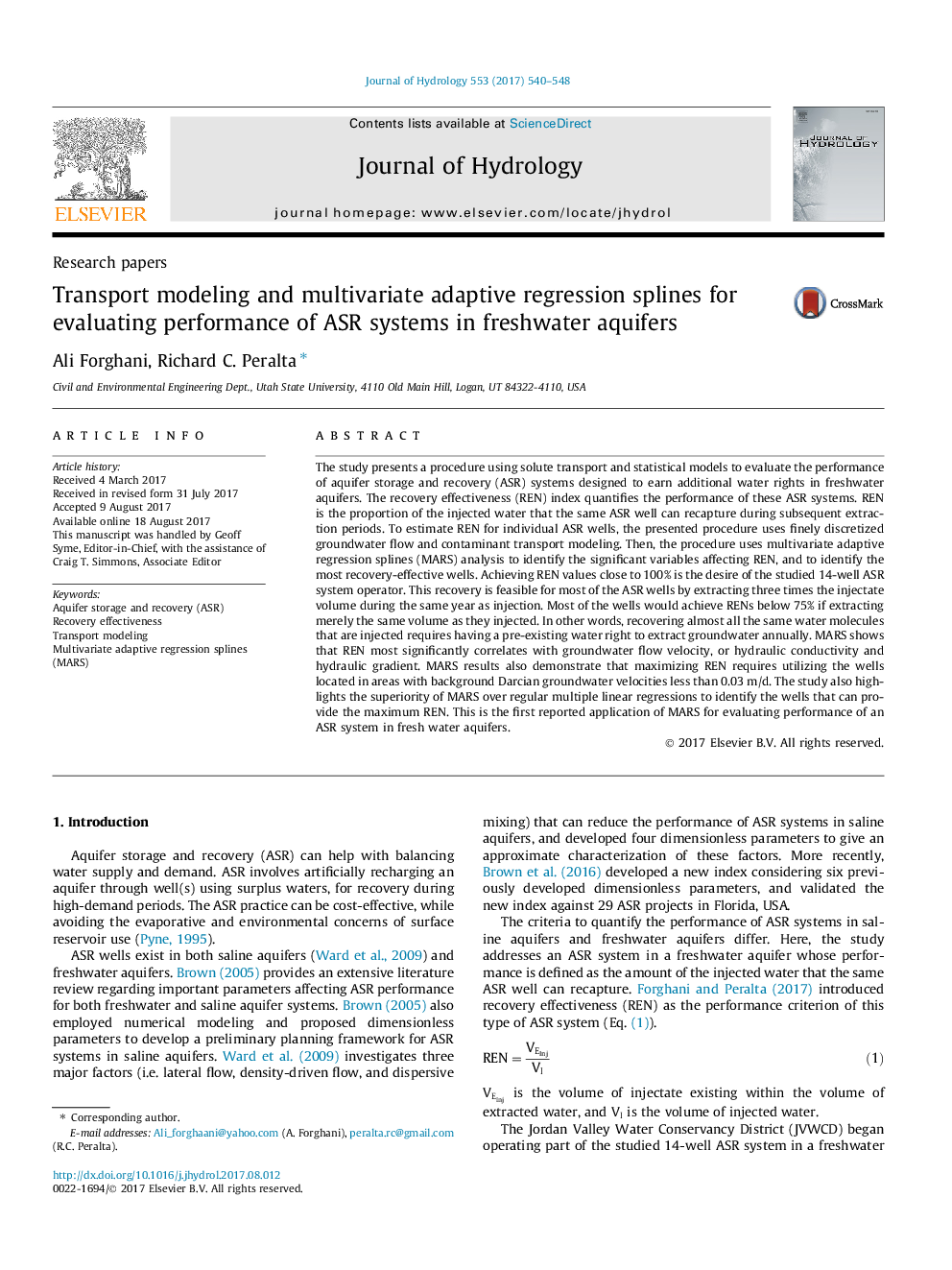| کد مقاله | کد نشریه | سال انتشار | مقاله انگلیسی | نسخه تمام متن |
|---|---|---|---|---|
| 5770837 | 1629901 | 2017 | 9 صفحه PDF | دانلود رایگان |

- REN is the proportion of the injected water that the same ASR wells can recover.
- The study estimates REN in freshwater aquifers using a transport model.
- The study details the process to prepare a reliable refined flow model.
- The study reports the first application of MARS regression to manage an ASR system.
- Results show the importance of having preexisting water rights for high RENs (â¼100%).
The study presents a procedure using solute transport and statistical models to evaluate the performance of aquifer storage and recovery (ASR) systems designed to earn additional water rights in freshwater aquifers. The recovery effectiveness (REN) index quantifies the performance of these ASR systems. REN is the proportion of the injected water that the same ASR well can recapture during subsequent extraction periods. To estimate REN for individual ASR wells, the presented procedure uses finely discretized groundwater flow and contaminant transport modeling. Then, the procedure uses multivariate adaptive regression splines (MARS) analysis to identify the significant variables affecting REN, and to identify the most recovery-effective wells. Achieving REN values close to 100% is the desire of the studied 14-well ASR system operator. This recovery is feasible for most of the ASR wells by extracting three times the injectate volume during the same year as injection. Most of the wells would achieve RENs below 75% if extracting merely the same volume as they injected. In other words, recovering almost all the same water molecules that are injected requires having a pre-existing water right to extract groundwater annually. MARS shows that REN most significantly correlates with groundwater flow velocity, or hydraulic conductivity and hydraulic gradient. MARS results also demonstrate that maximizing REN requires utilizing the wells located in areas with background Darcian groundwater velocities less than 0.03Â m/d. The study also highlights the superiority of MARS over regular multiple linear regressions to identify the wells that can provide the maximum REN. This is the first reported application of MARS for evaluating performance of an ASR system in fresh water aquifers.
Journal: Journal of Hydrology - Volume 553, October 2017, Pages 540-548